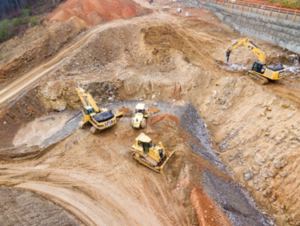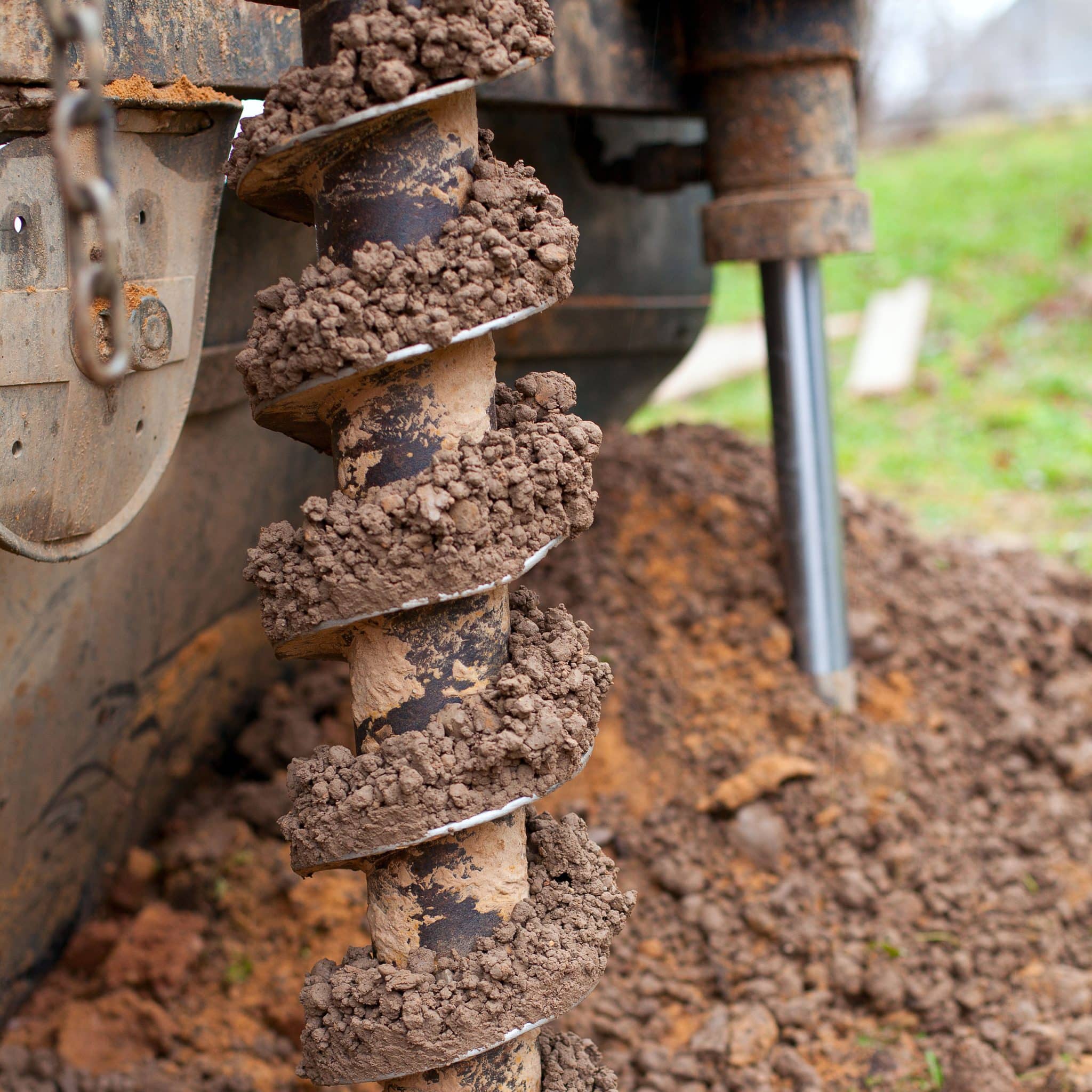Discovering the Duty of a Geotechnical Engineer Description and Duties
Discovering the Duty of a Geotechnical Engineer Description and Duties
Blog Article
Investigating the Interdisciplinary Nature of Geotechnical Engineering and Its Influence on Ground Enhancement and Foundation Style
The interdisciplinary nature of geotechnical design plays a critical role in shaping cutting-edge ground improvement methods and foundation style methods. By integrating insights from structural, environmental, and geological techniques, geotechnical designers are geared up to attend to complex dirt habits and site-specific obstacles. This collective technique not just boosts the efficacy of strategies such as soil stabilization and dynamic compaction yet also makes sure that projects stick to sustainability principles. What implications does this interdisciplinary synergy have for future advancements in the area, particularly in the context of arising construction innovations?
Summary of Geotechnical Design
Geotechnical engineering is an important branch of civil engineering that focuses on the actions of earth products and their interaction with structures. This technique includes the study of rock, soil, and groundwater, intending to understand their residential or commercial properties and exactly how they influence the performance of civil design tasks. Geotechnical engineers analyze the hydraulic and mechanical actions of these materials to ensure the security and safety and security of frameworks such as buildings, bridges, and preserving walls.
The range of geotechnical engineering includes site examinations, soil tasting, and screening, in addition to evaluation of soil technicians and rock auto mechanics. Designers utilize advanced strategies to assess ground problems, determine prospective hazards, and design efficient ground improvement options. This might include techniques such as soil stablizing, grouting, and making use of geosynthetics, which enhance the stamina and toughness of the ground.
In addition, geotechnical design plays an important duty in foundation style, determining appropriate structure kinds based on dirt characteristics and packing conditions. By incorporating extensive testing and analysis, geotechnical engineers contribute significantly to the sustainability and durability of framework, making certain that frameworks can withstand operational and environmental anxieties over time.
Key Interdisciplinary Relationships

In addition, ecological engineering plays a crucial role in examining the influence of geotechnical tasks on the bordering ecosystem. This cooperation is important for developing sustainable techniques that decrease ecological deterioration throughout excavation or ground enhancement processes.
In addition, the assimilation of geotechnical design with geology enhances the understanding of subsurface problems, assisting in even more precise site characterizations (geotechnical engineer description). This connection help in hazard analysis, particularly in locations susceptible to landslides or seismic activity, thus educating risk reduction methods
Last but not least, innovations in modern technology have actually caused interdisciplinary collaboration with information science and geoinformatics. These areas add to enhanced modeling and analysis techniques, allowing for extra exact predictions of soil behavior under various conditions. Thus, the interconnectedness of these disciplines improves geotechnical design, promoting development and effectiveness in foundation layout and ground improvement.
Ground Renovation Strategies
Ground enhancement methods are crucial approaches utilized to enhance the design residential or commercial properties of dirt, therefore enhancing its load-bearing ability and stability. These strategies are especially essential in locations where all-natural dirt conditions are inadequate for supporting structural loads or where environmental factors might compromise dirt stability.
Usual ground enhancement methods include dirt compaction, which enhances thickness and decreases void rooms, and grouting, which entails infusing materials into soil to load voids and bind particles together - about geotechnical engineering. Other methods consist of the installation of soil nails and anchors, which supply additional support, and using geosynthetics to reinforce soil structures. Deep blending approaches, such as soil-cement columns, can likewise considerably boost the stamina and rigidity of weak dirts
Furthermore, vibrant compaction and vibro-replacement strategies are usually employed to improve dirt properties in situ. These methods can reduce issues connected to settlement and liquefaction, particularly in seismic locations. By using go right here a combination of these innovative methods, geotechnical designers can efficiently address site-specific obstacles, making sure that the structure systems will certainly perform effectively under anticipated loading problems, hence adding to total project success.
Foundation Design Factors To Consider
Effective structure design factors to consider are essential for the long life and stability of frameworks. A well-designed foundation has to properly sustain the tons of the structure while suiting dirt conditions, environmental factors, and prospective modifications gradually. Secret elements include dirt bearing ability, settlement qualities, and groundwater conditions.
Recognizing the dirt profile through geotechnical examinations is crucial, as it educates the choice of foundation type-- be it superficial, deep, or specialized techniques such as pile structures or floor covering foundations. The expected tons, including live, dead, and ecological tons, should be accurately computed to make sure the foundation can stand up to prospective failure mechanisms, such as sliding, rescinding, or extreme settlement.
In addition, considerations for frost deepness, seismic activity, and prospective soil liquefaction in seismic zones are important. Furthermore, drainage and wetness control should be integrated right into the foundation layout to reduce concerns associated to hydrostatic stress and soil disintegration.
Collaboration among engineers, read this designers, and geotechnical experts is vital to create a comprehensive structure style that not just meets regulative demands but likewise makes certain the long-lasting efficiency and safety of the structure. Inevitably, extensive preparation and cutting-edge services are needed to resolve the complexities intrinsic in foundation design.
Situation Researches and Best Practices

One remarkable situation study includes making use of deep dirt mixing in a skyscraper task in a seismic zone. This strategy considerably enhanced the dirt's strength and security, permitting a much safer and extra reliable foundation system (geotechnical specialist). The project highlighted the relevance of choosing ideal ground improvement approaches based on site-specific conditions, consisting of dirt type and loading demands
Another example is the application of vibrant compaction for boosting the bearing capacity of weak soils under an industrial facility. This technique efficiently decreased negotiation problems and improved general website efficiency, showing the effectiveness of integrating standard design exercise with contemporary innovation.
Ideal practices originated from these situation research studies stress the requirement of comprehensive site investigations, partnership amongst multidisciplinary groups, and the unification of innovative Homepage modeling devices. By adopting these lessons, geotechnical engineers can optimize foundation designs and ground improvement techniques, eventually causing much safer and a lot more lasting building and construction outcomes.
Final Thought
In verdict, the interdisciplinary nature of geotechnical engineering considerably enhances ground renovation and foundation design. By incorporating principles from numerous design disciplines, customized methods are established to deal with specific obstacles connected to dirt properties and ecological impacts.
The range of geotechnical design includes website investigations, dirt sampling, and screening, as well as evaluation of soil technicians and rock mechanics. The connection in between geotechnical design and architectural design is specifically important, as the efficiency of structures is heavily affected by soil actions and residential properties.Usual ground enhancement techniques include soil compaction, which boosts density and lowers void spaces, and grouting, which includes infusing products right into soil to fill up spaces and bind fragments together. Other methods consist of the installation of soil nails and anchors, which supply added support, and the use of geosynthetics to strengthen dirt frameworks. A well-designed foundation should properly support the tons of the structure while suiting dirt problems, environmental elements, and prospective modifications over time.
Report this page